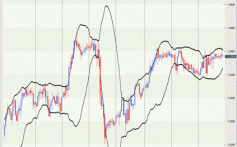Introduction to corrosion economics
Post on: 16 Март, 2015 No Comment

Any engineering project undertaken by a profit motivated organization has the underlying aim of enhancing the wealth of its owners (shareholders). management in industry ultimately bases its decisions on this principle, including those related to corrosion control. The selection of optimal projects from the viewpoint of owners wealth lies in the financial domain of capital budgeting techniques. These techniques determine how capital should be invested in the long term. Five key motives can be identified for making capital investments (expenditures): (reference )
- Expansion for increasing the scope and output of operations
- Replacement for obsolete or run-down assets
- Renewal for life-extension of assets, as an alternative to replacement
- Investment in non-tangible assets such as advertising, research, information. management consulting etc.
The formal steps in the capital budgeting process in sequential order are:
- Requirement/problem definition,
- Proposal generation,
- Review and analysis of the proposals,
- Decision making,
- Implementation,
- monitoring of results, to compare the actual project outcome with the predictions.
Corrosion Costs and Preventive Strategies Study
It is known that the corrosion of metallic structures has a significant impact on the U.S. economy, including infrastructure, transportation, utilities, production and manufacturing, and government. A 1975-benchmark study by Battelle-NBS calculated the cost of corrosion to be $70 billion per year, which was 4.2 percent of the nation’s gross national product (GNP). Other studies, both in the United States and abroad have addressed the cost of corrosion as well.
A need was identified to carry out a systematic study to estimate the current impact of metallic corrosion on the U.S. economy and to provide strategies to minimize the impact of corrosion. Through discussions between NACE International (The Corrosion Society), members of Congress, and the Department of Transportation (DOT), an amendment for the cost of corrosion was included in the Transportation Equity Act for the 21st Century (TEA-21), which was passed by the U.S. legislature in 1998. In the period from 1999 to 2001, CC Technologies conducted the research, in a cooperative agreement with the Federal Highway Administration (FHWA).
In this study, the total direct cost of corrosion was determined by analyzing 26 industrial sectors, in which corrosion is known to exist, and extrapolating the results for a nationwide estimate. The total direct cost of corrosion was determined to be $279 billion per year, which is 3.2 percent of the U.S. gross domestic product (GDP). Indirect costs to the user (society costs) are conservatively estimated to be equal to the direct costs. This means that the overall cost to society could be as much as six percent of the GDP. Often, the indirect costs are ignored because only the direct costs are paid by the owner/operator.














